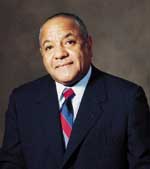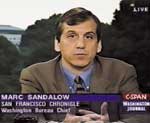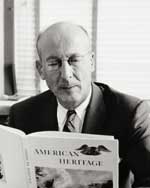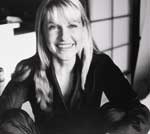 |
 |
|||||||||||
|
Commentary has always had a complicated relationship to the news, and the notion of a non-partisan press is relatively modern. Opinions, seasoned with fact, were the unapologetic pursuit of the 19th century editor-in-chief of The Woman's Journal, suffragist champion Lucy Stone, an 1847 Oberlin graduate. More recently, opining is what journalists do after serving in the hard-news trenches. Long before he became a nationally known commentator, Carl Rowan '47 traveled 6,000 miles in six weeks to report his still-vivid 1951 Minneapolis Tribune series, "How Far From Slavery." Rowan later served in the State Department and as head of the U.S. Information Agency before returning to newspaper columns and television. A similar news-to-commentary trajectory was followed by the ephemerally famous Raymond Gram Swing, who entered Oberlin in 1905. A prankster who found freshman math "totally incomprehensible," Swing got himself booted out after one year. Much later, he came to an appreciation for "how much Oberlin had given me--in music, in the first interest I had in the other arts, in the basic liberalism of racial and sexual equality." By the 1940s, the one-time Cleveland News reporter was the nation's highest-paid radio commentator. "The most bothersome trend to me is the general trend toward more opinion and interpretive stories and less actual reporting," said Ted Gest '68 of U.S. News and World Report. "Many journalists these days seem to think that reaching conclusions based on flimsy evidence is acceptable. Some of it is laziness, some of it is 'herd' reporting, and some of it is due to time and resource pressure. There simply isn't time to report many complex topics fully." Perceived bias isn't the only wedge driving apart journalists and the public. There's also the growing gap between what the public says it wants, and what journalists insist on offering. The ASNE survey found 88 percent of the public agreeing that sensational news stories get covered because they're exciting, not because they're important. But the public's putative high-mindedness must be put into some perspective. There's a reason why at least seven books written about the Jon Benet Ramsey murder case have sold 900,000 copies, why The National Enquirer claims to be the biggest circulation newspaper in America, and why MSNBC ratings rose every time it covered the Clinton scandal. Sex and celebrity sell because of willing buyers.
"People talk about journalists being too far left or right, but that's not the problem," said Marc Sandalow '82, the Washington bureau chief for the San Francisco Chronicle. "The problem is hype...there's a big push to make all political news as entertaining as you can." The great public yawn during the president's impeachment trial illustrated widespread alienation from Washington and the press, and may have particularly disturbed those reporters who came of age during the investigative reporting heyday of Watergate. Hamburger, for one, recalled his vivid 1973 Winter Term internship at the rabble-rousing San Francisco Bay Guardian. While Washington was transfixed by Watergate, an inspired Hamburger began digging into forsaken records at the San Francisco Weights and Measures Office. His discoveries revealed a pattern of faulty supermarket scales and lack of city enforcement; and led, later, to a consumer class-action suit. "What fun!" recalled Hamburger, who later became a Pulitzer finalist for revealing how a legal publishing company lavished luxurious vacations on federal judges. "What impact! I was hooked." Hamburger joined a succession of 1970s-era Oberlin graduates who trained at the Pine Bluff Commercial in Arkansas. So many Obies circulated through the newsroom that one reporter called it the 'underground railroad in reverse.' This also was faithful to the journalistic tradition of on-the-job training; a tradition followed, much earlier, by the estimable Bruce Catton.
The Pulitzer Prize winning historian and founding editor of American Heritage entered Oberlin in 1916, where in journalism's sad-sack tradition he recalled being good in English but "hopeless" in math. Catton left Oberlin early, to eventually join the Cleveland Plain Dealer and a succession of newspapers that carried him to Washington and his appointment with history. Like fellow dropout Raymond Gram Swing, he later earned a honorary Oberlin degree. And, like Swing, Catton retained an Oberlin heart. In 1962, both men resigned in protest from Washington's elite Cosmos Club when the club refused to admit Carl Rowan as its first black member. As historian and journalist both, Catton knew the potential that today's reporters are still struggling to fulfill. He deserves the last word, fraught with both promise and challenge. "Out
of sight," Catton once said, "somewhere, something great
is moving. When the reporter or the historian does his job
faithfully, now and then we get a glimpse of it."
Michael Doyle is a reporter in the Washington bureau of McClatchy Newspapers. He can be reached at mdoyle@mcclatchydc.com. |
||||||||||||
|
|
||||||||||||



